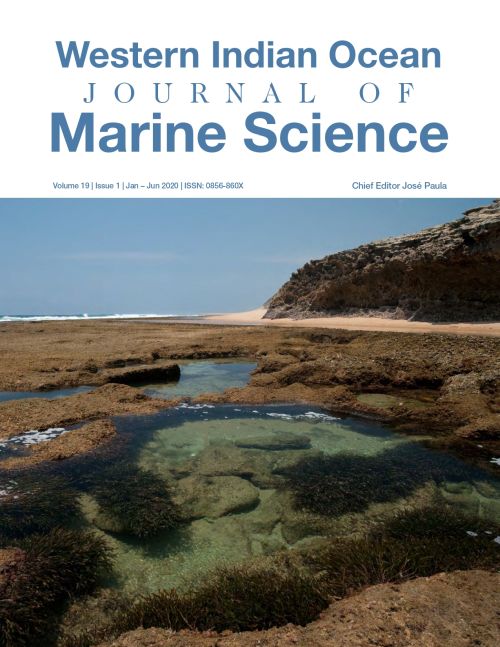Main Article Content
Characterisation of artisanal catches in selected fishing areas of the Lower Tana Delta and Malindi-Ungwana Bay, Kenya
Abstract
Shore-based assessment of fisheries resources in Ngomeni, Kipini and Ozi fishing areas of Malindi-Ungwana Bay and the Lower Tana Delta on the north coast of Kenya was conducted from January to December 2017 to establish catch composition, species richness, and fishing effort (catch-rate, number and types of fishing gears and crafts) in the marine, estuarine and riverine habitats. Distinct catch composition (R = 0.27, P < 0.05) was observed across the three habitats. Catch composition differed significantly spatially and seasonally across the three fishing areas, and between the north east (NE) and south east (SE) monsoon seasons (R = 0.332, P < 0.05). The wolf herring, Chirocentrus dorab, was the most abundant fish species in Ngomeni, centrally located in Malindi-Ungwana Bay, while the catfishes, Arius africanus and Clarias gariepinus, were the most abundant species in Kipini and Ozi, respectively. Gillnets operated from dhows (mashua) and fibre-reinforced plastic (FRP) boats in Ngomeni (marine), and canoes using-basket traps in Ozi (riverine), landed significantly larger Spanish mackerel, Scomberomorus commerson, and sea catfish, Arius africanus (Kruskal Wallis test: Df = 2; F = 197.141; p < 0.001; Df = 2, F = 490, p < 0.001), respectively. Species diversity by area in combination with habitat and type of fishing craft showed higher diversity for Ngomeni in the marine habitat with mashua fishing crafts than in Kipini. Significantly different catch rates (Df = 2, F = 10.43, p<0.001; Df = 1, F = 5.897, p < 0.021) were observed in the three (3) fishing areas and during the NE monsoon and the SE monsoon, respectively. Canoes were the most common fishing craft used, especially in Ngomeni, accounting for 37.1%, and 97.5% in Ozi, while mashua crafts accounted for 44.5% of the total fishing craft in Kipini. Monofilament nets were most common in Ngomeni (34.0%) while basket traps dominated the Ozi site at 63.6%. The Kipini area was dominated by handlines (28.8%). It is therefore evident that the three (3) fishing areas of the Malindi-Ungwana Bay and Lower Tana Delta showed significant differences in catch composition and size of fish caught, attributed partly to the variation in habitat types and fishing methods between the sites. Overall, the Ngomeni area was characterized by more advanced fishing craft with the majority powered by engines, including mashua and FRP boats, compared to Kipini and Ozi fishing areas where canoes were dominant.






